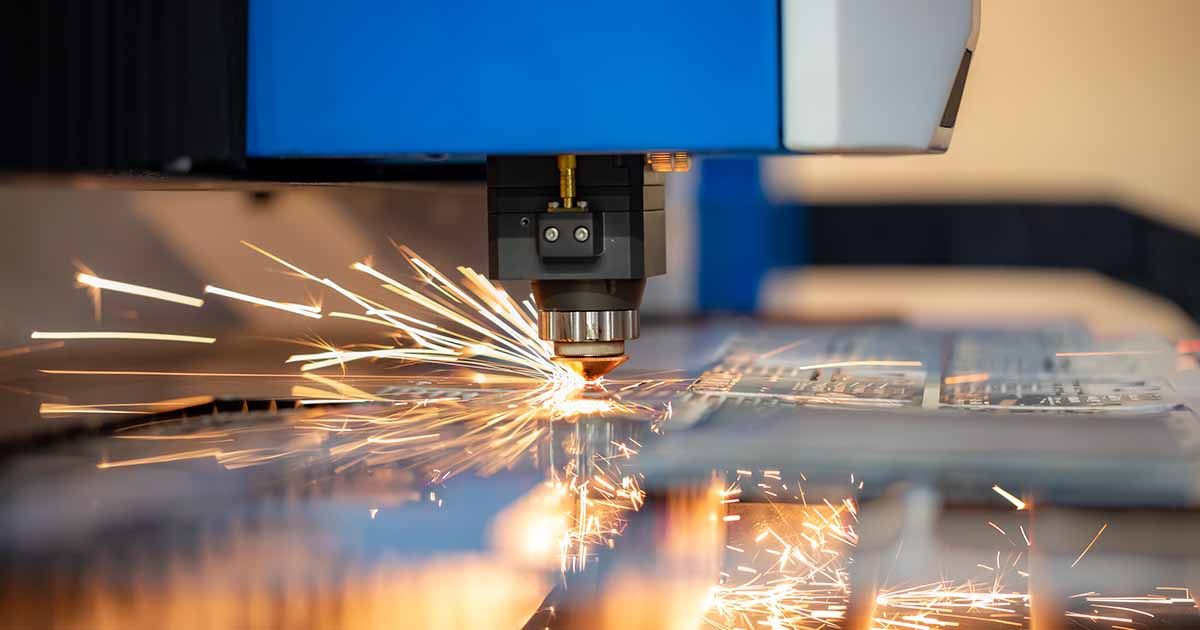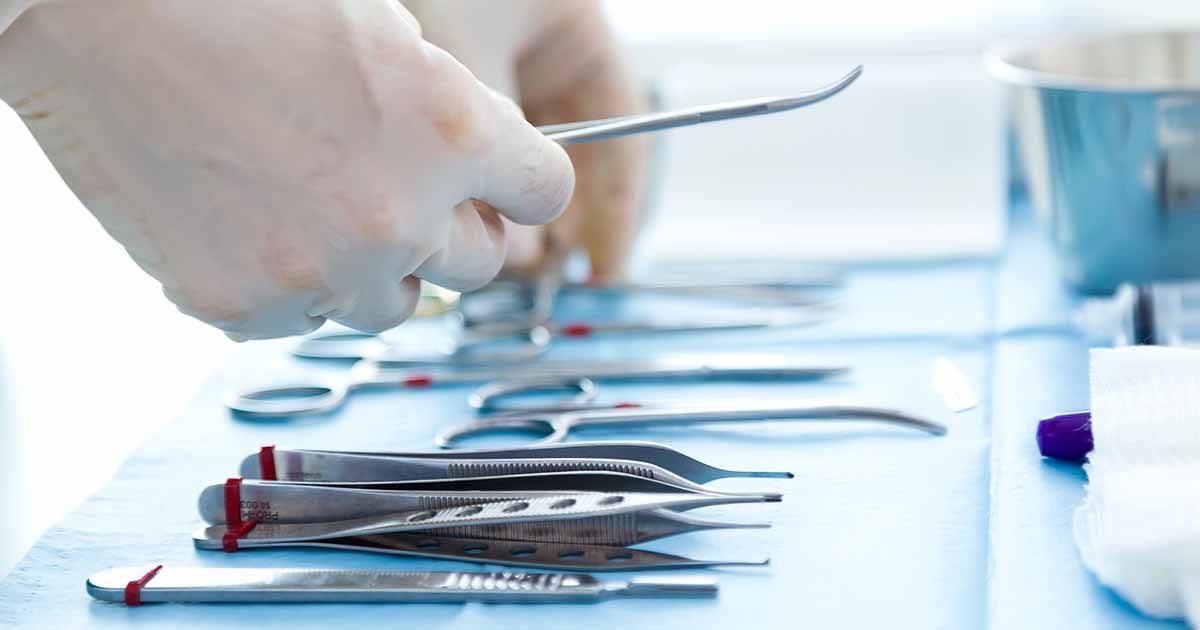
We collect basic website visitor information on this website and store it in cookies. We also utilize Google Analytics to track page view information to assist us in improving our website.

Laser cutting is a game-changer in medical device manufacturing, and the name of the game is precision.
When it comes to medical tools and devices, there's no room for error. That's where laser cutting comes in. It's incredibly accurate, making it ideal for creating the detailed parts needed in advanced medical procedures.
In medical device manufacturing, precision is non-negotiable. Laser cutting delivers this with the fine detail and efficiency these critical parts require. The components it produces are complex and crucial—they save lives and improve patient care.
In this blog article, we will focus on how industrial laser cutting plays a vital role in the medical device industry. We'll look at its essential benefits, the strict standards it meets, and why, for medical devices, laser cutting is the first choice for creating reliable components that doctors and patients count on.
At Amber Steel, we specialize in laser, plasma and flame cutting, and have always been a "total source" service for the production of quality steel products. Quality is achieved by utilizing the right production technique for the right product. Our continual investment in equipment and technology enables us to offer clients many production alternatives to achieve exact product specifications and tolerances.
If you’re interested in learning more about steel cutting or have a project in mind that you would need our expertise on, do not hesitate to reach out. We’re always one email or phone call away.
Think of a tool that slices through metal with the precision of a scalpel.
It works like this: a laser cutting machine emits a focused beam of light onto a piece of metal. The laser's energy is so intense that it burns, melts, or even vaporizes the material, leaving behind a clean and precise cut.
Choosing the right type of laser, whether it's CO₂, fiber, or Nd:YAG, is key. The same way a surgeon chooses the right instrument for surgery, we also choose the right tool for our laser cutting procedures.
Each laser has its strengths, tailored to different materials and jobs, so the precision in cutting translates directly to the precision in medical devices.
CO₂ Lasers: Think of CO₂ lasers as the all-rounders, good for cutting, engraving, and more. They’re like a conductor, guiding a wide range of materials into formation.
Fiber Lasers: Fiber lasers are the speed demons, known for their fast and efficient cutting, especially with metals. They’re the racers, leaving neat cuts in their wake.
Nd:YAG Lasers: The heavy lifters of the bunch, Nd:YAG lasers tackle the thick materials, cutting with intense precision.
When it comes to medical device manufacturing, fiber lasers are often the go-to. Their fine focus is like a surgeon's scalpel, perfect for detailed work on tiny, intricate device parts. They also work fast, which is great for meeting the high demands of the medical field, and they don't affect the surrounding material much, which is crucial for the delicate devices.
While fiber lasers often take center stage, there are times when the specific skills of CO₂ and Nd:YAG lasers are in demand. When you need a super smooth edge or have to etch non-metals, CO₂ lasers are your best bet. Nd:YAG lasers come into play for their robustness in cutting through thick materials.
Laser cutting technology offers a range of advantages that touch every part of the manufacturing cycle, from the drawing board to the final product.
Laser cutting shines when it comes to crafting very detailed and complex designs. Its precision, down to the smallest unit of measurement, makes it indispensable for medical devices where every micrometer counts for safety and function.
This method is gentle on materials—it doesn't touch the part it's cutting, avoiding any potential bending or harming of the workpiece. This non-contact quality is a big deal for fragile or very slim materials that could suffer from more heavy-handed cutting ways.
Lasers work fast. They make quick work of even the most complex cuts, moving swiftly from one cut to the next. This speed translates into more efficient production lines, especially where high volumes are the norm.
Laser cutters are incredibly versatile. They can handle a variety of materials and thicknesses without swapping out tools—just a quick tweak of the settings, and they're good to go. This adaptability is key for the range of materials found in medical devices.
With CNC (Computer Numerical Control) technology, laser cutting achieves highly precise and uniform cuts over and over again. Once the cutter is programmed, it can replicate parts with virtually no difference between them, a must-have for the stringent consistency required in medical manufacturing.
The laser's heat is focused so narrowly that it barely affects the material around the cut, maintaining the metal's strength and structure. This is especially important for materials that could weaken under heat.
The cuts made by lasers are so clean that there's usually very little finishing work needed. This is a big plus for medical device production, where any left-behind bits or rough edges could pose a risk to patients.
Laser cutting is also more material-efficient than traditional methods, meaning less waste. This is not just cost-effective, it's also in line with lean manufacturing principles and is better for the planet, cutting down the waste that production generates.

Laser cutting isan essential process in creating medical devices. Let’s look at how laser cutting is making a difference:
Surgical Instruments: In the OR, surgical instruments must be flawless, with exact edges and shapes. The journey of these instruments begins with laser cutting, providing the precise cuts that form the basis for further refining.
Implants: Hip and knee replacements, for example, start as basic metal shapes. Laser cutting fine-tunes these pieces, adding the intricate details necessary for the implant's fit and performance.
Stents: Stents, the tiny mesh tubes that keep blood vessels open, showcase the precision of laser cutting. This technology enables the creation of their intricate lattice designs.
Heart Valves: For mechanical heart valves that include metal parts, laser cutting's exactness is critical to ensure they operate reliably under strict performance standards.
Diagnostic Equipment: Tools like blood glucose monitors and MRI components need precise metal parts. Laser cutting ensures these components meet exacting specifications for reliable device function.
Robotic Surgery Equipment: With robots playing a bigger role in surgeries, the metal parts within need to be cut precisely. Laser cutting enables the accuracy required for these advanced machines.
In medical manufacturing, laser cutting stands out for its precision, but also for its clean cuts that maintain material integrity—essential where any weakness could be a risk. Its ability to handle complex designs adds to its value.
Laser cutting isn’t the end of the line. It’s typically part of a larger manufacturing workflow involving machining and finishing. Often the first stepsets the standard for the metal parts, ensuring top quality from the beginning.
In medical manufacturing, laser cutting is critical because it hits the mark on the precision and uniformity needed for complex designs. Medical devices can't have any discrepancies—they have to match exact specifications. Laser cutters are masters at making these precise components time after time.
The medical device field has strict rules to make sure everything is safe for patient use. Laser cutting plays a big part in helping manufacturers stay within these rules:
Process Validation: Regulators want proof that manufacturing processes work as they should. Laser cutting settings need to be recorded and used consistently to keep component quality up to scratch.
Traceability: Each part needs a clear production history. Laser systems have software that keeps track of all the details, so you know exactly where each component came from.
Cleanroom Compatibility: Some medical parts need to be made in extra-clean environments. Laser cutters fit right into these spaces without risking contamination.
Calibration and Maintenance: A laser cutter has to be precise. Regular checks and upkeep make sure it stays that way, keeping cuts within the tight margins needed.
Quality Control and Inspection: Cut parts go through tough checks. Laser precision means components are more likely to meet the high standards required.
Risk Management: Laser cutting is part of making sure everything is safe and under control, reducing issues like material problems or quality slip-ups.
Recordkeeping: When it comes to following the rules, you need good records. Laser machines make it easier to keep track of how every piece is made, which is crucial when auditors come calling.
Laser cutting is essential in medical device manufacturing because it offers the high level of detail, consistency, and regulatory compliance that this industry demands. The technology not only ensures high-quality parts, but also backs up the thorough documentation and product tracking needed by regulatory authorities.
Industrial laser cutting has become a cornerstone in producing medical devices, valued for its pinpoint accuracy, speed, and adaptability. This high-tech method meets the exacting needs of a sector where there's no room for mistakes—every cut could have significant consequences.
Laser cutters are perfectly in tune with the critical requirements of uniformity, precision, and strict adherence to health and safety regulations. They're versatile enough to etch the fine details of a stent or shape the tough metals used in joint replacements with reliable accuracy.
By enabling the production of high-quality components, laser cutting is at the heart of creating medical devices that save lives and push the boundaries of medical innovation. As the field of medical device manufacturing grows and changes, industrial laser cutting is ready to match every new challenge.
At Amber Steel, we specialize in laser, plasma and flame cutting, and have always been a "total source" service for the production of quality steel products. Quality is achieved by utilizing the right production technique for the right product. Our continual investment in equipment and technology enables us to offer clients many production alternatives to achieve exact product specifications and tolerances.
If you’re interested in learning more about steel cutting or have a project in mind that you would need our expertise on, do not hesitate to reach out. We’re always one email or phone call away.